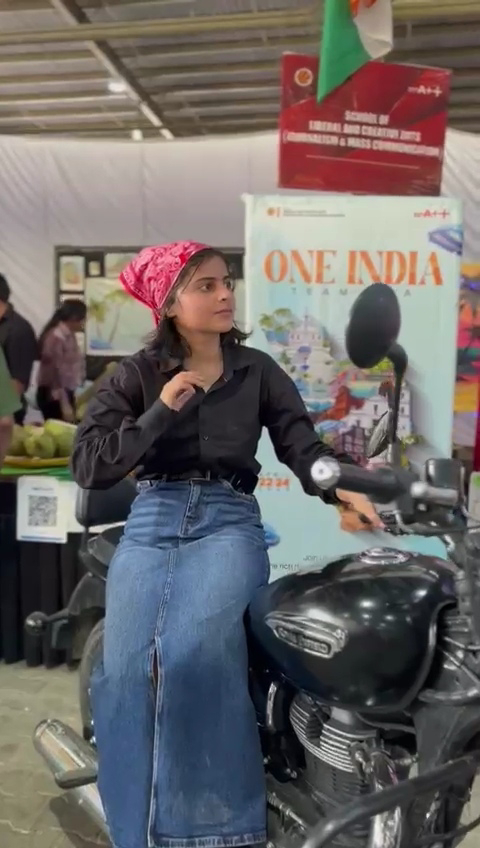The Goa stall was a beautiful tribute to the state’s rich cultural history, vibrant arts, and delicious cuisine. Goa, often referred to as the "Pearl of the Ancient World," is known for its breath-taking beaches, colonial heritage, and lively traditions. The stall creatively showcased these aspects, giving visitors a glimpse into the soul of Goa. A man with a guitar and a Bullet bike represented the state’s youthful spirit and love for music and adventure, instantly capturing the attention of the crowd. Goa’s blend of spirituality and culture was evident in a prominent Lord Ganesh statue, symbolizing the deep Hindu roots that thrive in the state.
A traditional Goan hut displayed the simple, rustic lifestyle of the rural Goan community, while a boat model served as a reminder of Goa’s iconic coastline and its thriving fishing industry. To bring the “Pearl of the Ancient World” to life, the stall also featured meticulously crafted food models, including dishes like Goan Fish Curry, Pork Vindaloo, Chicken Xacuti, Bebinca, and Sanan. These small-scale representations gave visitors a taste of Goa's renowned culinary delights.
Uganda Stall: The Pearl of Africa
The Uganda stall shone brightly as the “Pearl of Africa,” a title famously coined by Winston Churchill to describe the country’s extraordinary beauty and diversity. Uganda's rich culture, art, and history were showcased through stunning displays that transported visitors to the heart of East Africa. The stall featured a collection of pictures and pottery jewellery, highlighting Uganda’s craftsmanship and artistic traditions. Intricately designed masks and drum models were crafted to symbolize the powerful music and ceremonial traditions that are integral to Uganda’s identity.
Both the Goa and Uganda stalls served as shining examples of what makes these regions truly special. Goa, with its status as the "Pearl of the Ancient World", brought a rich history, a coastal charm, and a spicy flavour to the festival. Meanwhile, Uganda, the "Pearl of Africa," captivated visitors with its diverse artistic expressions and rich cultural heritage. Through their efforts, the Journalism and Mass Communication students at LPU not only brought the essence of these regions to life but also created an immersive, interactive experience that celebrated the spirit of global unity. The One India One World event was a testament to the power of culture in connecting people from all corners of the world, showing that no matter where we come from, we are united by our shared humanity and the beauty of our differences.




























